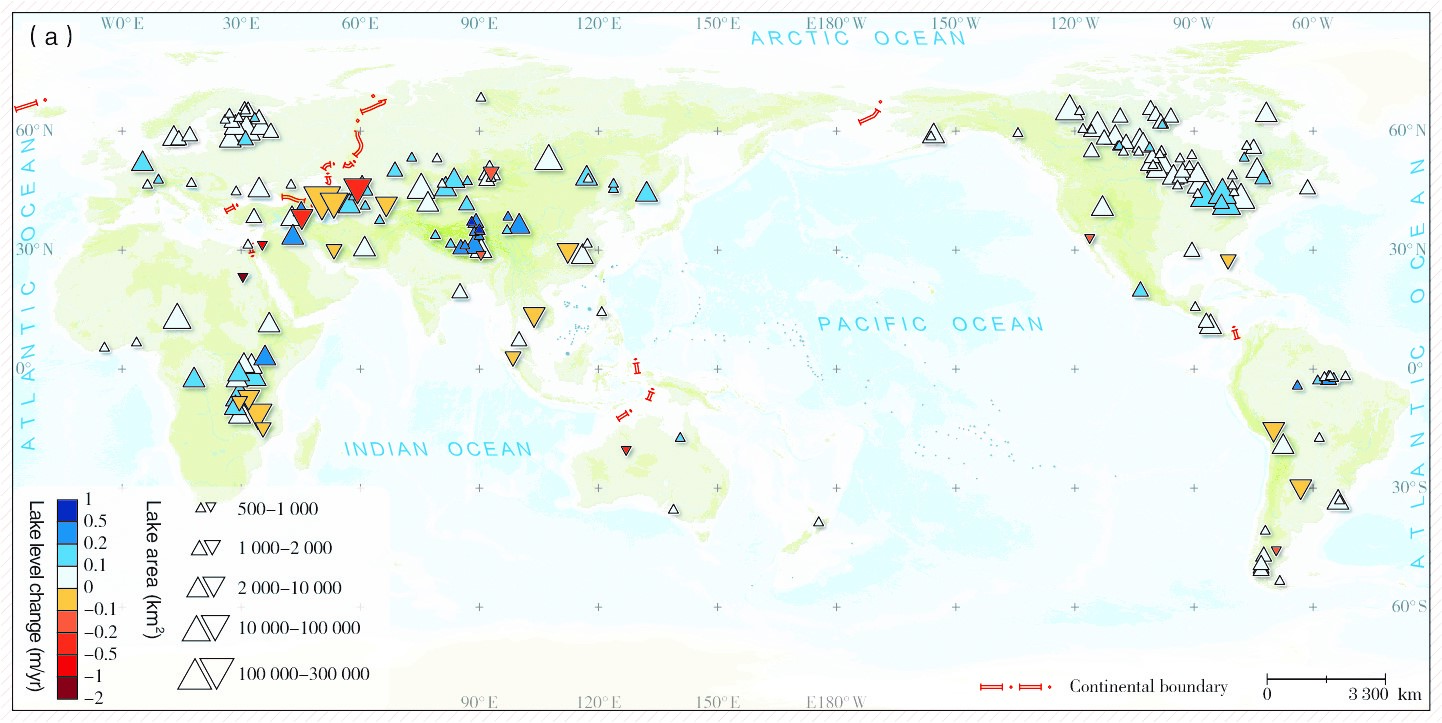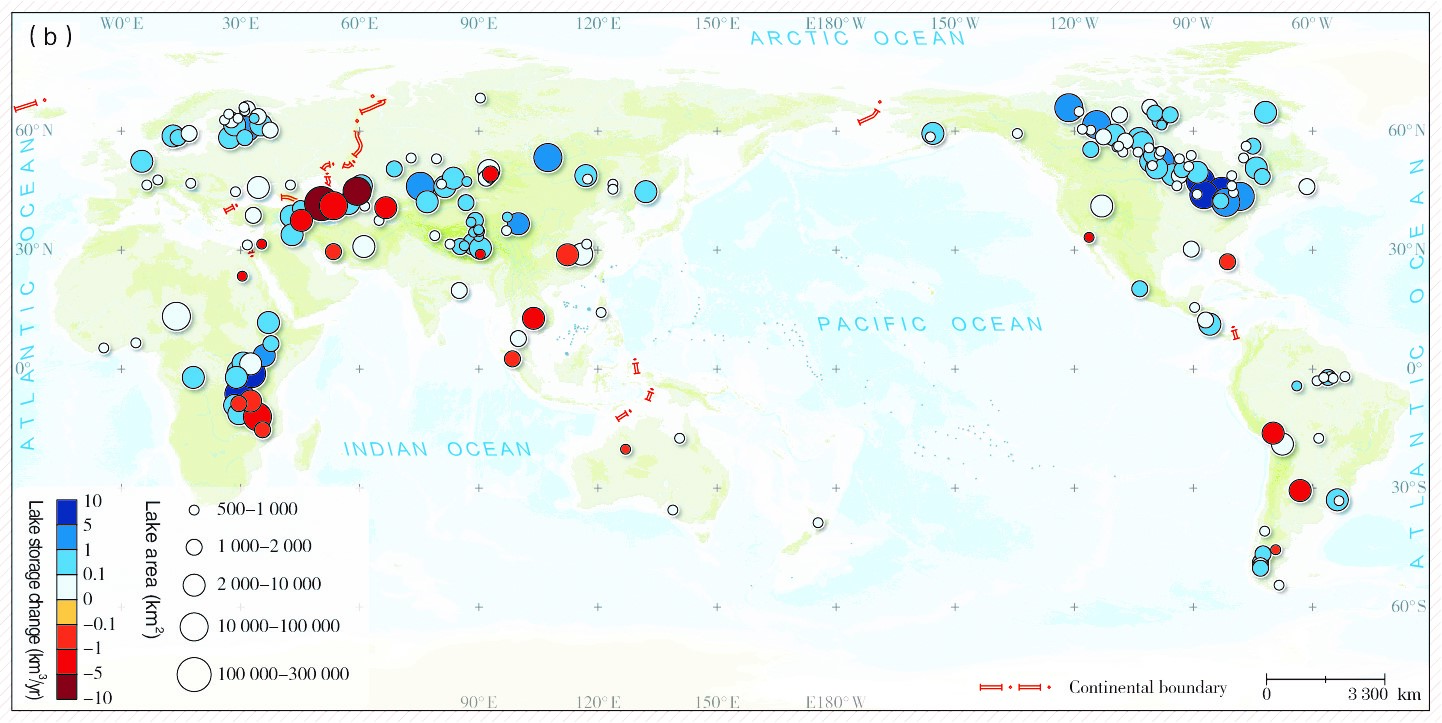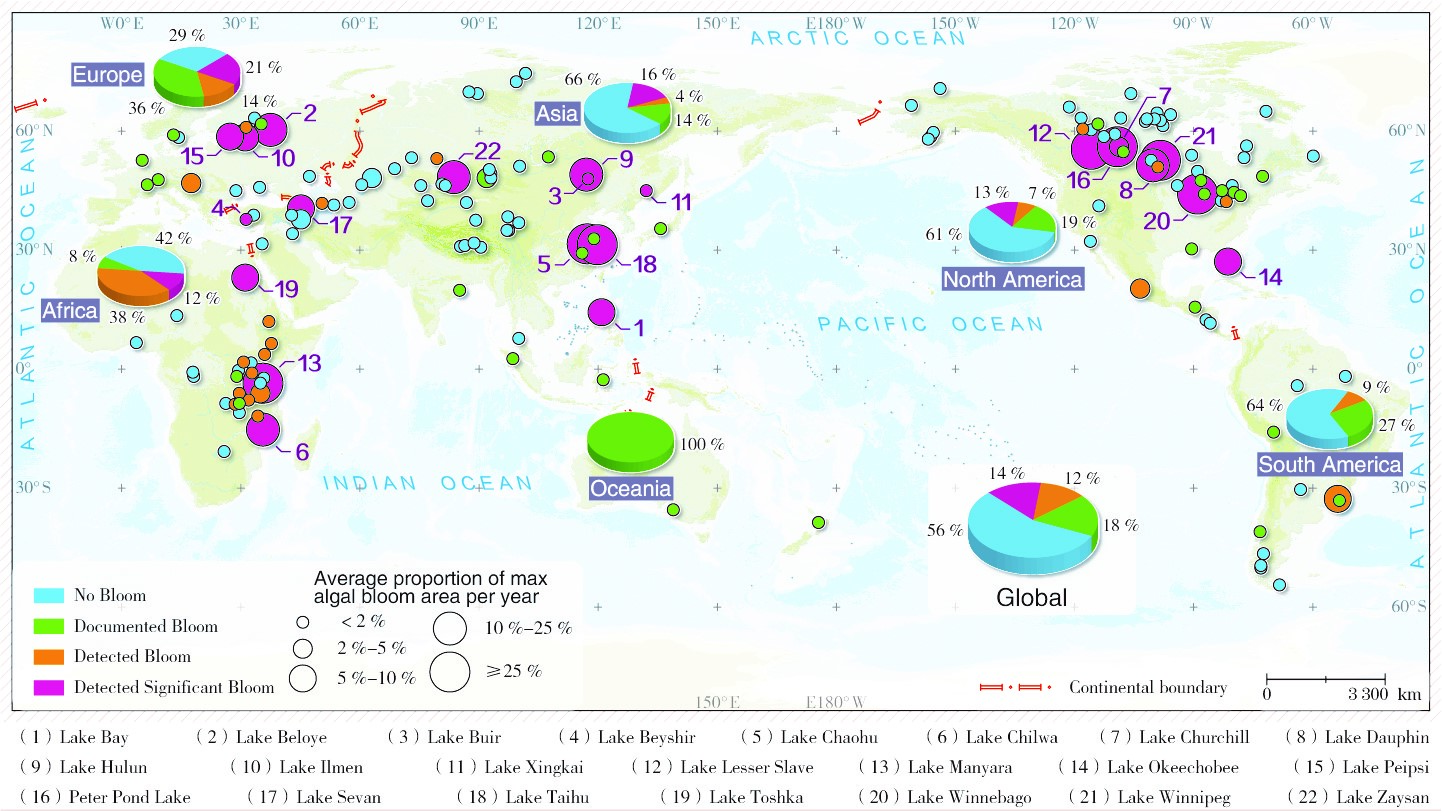‘Ecological and Environmental Status of Global Typical Lakes’ released worldwide
The formation, development, expansion, and shrinkage of lakes are all affected by climate change and human activities. Global warming leads to increases in the water evaporation, the melting of ice and snow in alpine regions, and consequently, the high dynamics of lake water storage changes. At the same time, the rapid development of social-economy leads to sharp increases in water consumption. Intense agricultural activities cause significant discharge of pollutants, such as nitrogen, phosphorus and pesticides. This results in eutrophication of lakes and algae growth and algal blooms, which greatly endangers the health of lake ecosystems and water quality.
Eleven of the 17 Sustainable Development Goals (SDGs) identified in the UN 2030 Agenda for Sustainable Development are related to inland water. Among them, SDG6: Clean Drinking Water and Sanitation Facilities focuses on three elements: water resources, water environment, and water ecology, which are most closely related to lakes.
Organized by National Remote Sensing Center of Ministry of Science and Technology of the People’s Republic of China, the report ‘Ecological and Environmental Status of Global Typical Lakes’ pays attention to the quantity and quality changes of typical natural lakes with a lake size greater than 500 km2, covering the period of 2000 to 2020. Various sources of remote sensing data were used to identify the changes of water level, water storage and algal blooms.
In general, the total water storage of global lakes were increasing, but demonstrated a strong regional variation. The lakes in the inner Tibetan Plateau were found to rise at the fastest rate among the monitored lakes, due to their high sensitivity to climate warming. While, the lakes in Central Asia were declining very fast, due to the arid climatic conditions and the rapid increase in water resource exploitation.


Annual change rate of (a) water level and (b) water storage of global large lakes from 2000 to 2020
Algal blooms were detected in nearly 50% of the monitored lakes covering almost all the continents. In China, Lake Taihu and Lake Chaohu were still among the most severe algal bloom lakes. However, it is encouraging that the overall environmental status of lakes in China is getting stable, showing the positive outcomes of the development of ecological civilization called by the Chinese governments in recent years.

Algal blooms in global large lakes from 2000 to 2020
The report revealed updated knowledge of the ecological and environmental changes of large lakes at a global scale under the impacts of climate changes and human activities. The datasets and the report may provide strong support for assessing SDGs implementation.
The above report (http://www.chinageoss.cn/geoarc/en/) led by Professor ZHANG Qi of Nanjing Institute of Geography and Limnology, Chinese Academy of Sciences, is one of the four reports released in 2021 by the Global Ecosystem and Environment Observation Analysis Research Cooperation (GEOARC). GEOARC mainly performs ecosystem and environment monitoring and analysis at global and regional scales, devotes to provide public goods and scientific findings for decision making on GEO Engagement Priorities, including SDGs, Climate Action, Disaster Risk Reduction, Resilient Cities and Human Settlements.
Contact
TAN Lei
Nanjing Institute of Geography and Limnology
E-mail: ltan@niglas.ac.cn
